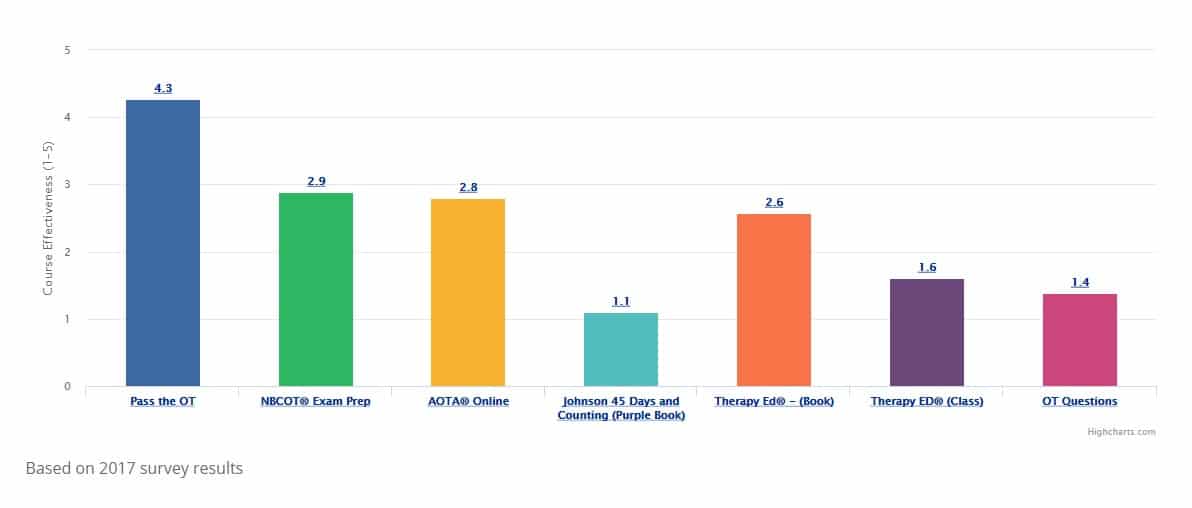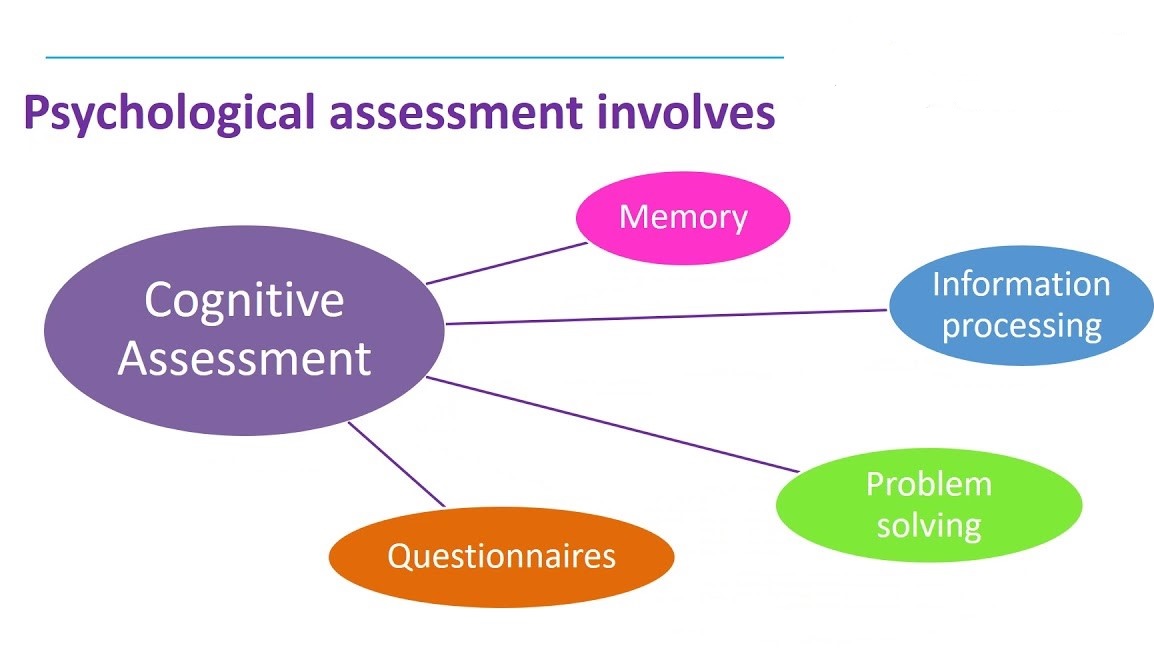

| Features | Free Trials | Others |
|---|---|---|
| Group Tutoring Sessions | 1 | Weekly |
| Customized study Schedule | ||
| Total number of questions with rationale | 100 | 2000+ |
| Easy to use charts | 30 | 114 |
| Hours of streamable audio | 30 | 50 |
| Assessment Tests | 40 | 200 |
| Highlighted material & dictation | ||
| Clinical Simulations | ||
| Comprehensive final exam | 200 | |
| 24 hr access to support team | ||
| Mini Quizzes (All topics & domains) | ||
| Proprietary study tips & Games | ||
| Accomodation Quizes | ||
| PTOT mobile app | ||
| Pass Guarantee* | ||
| Payment plans available |
Psychosocial Assessments

| General Assessments of Mental Status | Assessments of Cognition, Affect, Depression &/or Sensory Processing | Assessments of Task Performance | Assessments of Occupational Performance & Roles |
| Name: Mini Mental State Exam (the Folstein Mini Mental)
Purpose: quick screening test of cognitive functioning Method: structured tasks are presented in an interview format (part I: verbal responses to assess orientation, memory, and attention; part II- assesses ability o write a sentence, name objects, follow verbal/written directions, and copy a complex polygon design); max score is 30 and score 24 or below indicates cognitive impairment Population: individuals with cognitive or psychiatric dysfunction |
Name: Allen Cognitive Level Test
Purpose: assesses cognitive level (according to Allen cognitive levels); yields info about abilities and limitation Method: performance of several leather lacing stitches following instruction and/or demo; level criteria= level 2 (unable to imitate running stitch), level 3 (able to imitate running stitch, 3 stitches), level 4 (able to imitate whip stitch, 3 stitches), level 5 (able to imitate single cordovan stitch using overt physical trial and error, 3 stitches), level 6 (able to imitate single cordovan stitch using overt mental trial and error, 3 stitches) Population: individuals with cognitive or psychiatric dysfunction |
Name: Bay Area Functional Performance Evaluation
Purpose: assesses cognitive, affective, performance and social interaction skills to perform ADLs Method: brief interview; task oriented assessment (5 standardized timed tasks to measure cognition, performance, affect, qualitative signs, and referral indicators) and social interaction scale (5 situations to assess general ability to relate to others within environment); optional self-report; each scored separately Population: adult individuals with psychiatric, neurological, or developmental diagnoses |
Name: Activities Health Assessment
Purpose: assesses time usage, patterns and configurations of activities, roles, and underlying skills and habits Method: person is interviewed and completes idiosyncratic activities configuration schedule and questionnaire; not scored; determination of person’s activities health is made by person and therapist Population: adults through elders |
| Name: Short Portable Mental Status Questionnaire
Purpose: assesses intellectual function Method: a short questionnaire asks 9 questions and a subtraction task; each item receives 1 point if inaccurate; score of 0-2 indicates intact intellectual function, 8-10 is severe impairment Population: individuals with cognitive or psychiatric dysfunction |
Name: Beck Depression Inventory
Purpose: measures the presence and depth of depression Method: interview or questionnaire completion; individual rates his/her feelings relative to 21 characteristics associated with depression; items are score 0-3, 3 being most severe; score greater than 21= sever depression Population: adolescent and adult |
Name: Comprehensive Occupational Therapy Evaluation Scale
Purpose: to observe and rate behavioral changes in areas of general, interpersonal, and activity level Method: individual is observed and ranked for 7 items for general behavior, 6 items for interpersonal behavior, and 12 items for task behavior; scored 0= normal to 4= severe Population: adults with acute psychiatric diagnoses |
Name: Adolescent Role Assessment
Purpose: assesses the development of internalized roles within family, school, and social settings Method: semi-structured interview that follows an interview guide to generate discussion; scoring indicates behavior that is appropriate, marginal or inappropriate Population: adolescent age 13 to 17 |
| Name: Elder Depression Scale
Purpose: assesses depression in elderly Method: 30 item checklist which looks at presence of characteristics associated with depression; items are scored yes or no; score of 10-11 most often indicates depression Population: elders |
Name: Barth Time Construction
Purpose: assesses time usage, roles, and underlying skills and habits Method: person constructs a color-coded chart depicting the way his/her time is spent; COTE scale may also be completed; not scored Population: adolescent through elder |
||
| Name: Hamilton Depression Rating Scale
Purpose: measures severity of illness and changes over time Method: interview; clinician rates info obtained relative to 17 symptoms and characteristics; also rated are diurnal variation, depersonalization, paranoid symptoms, and obsessional symptoms; items are rated 0-2, with 0= absent and 2= present or 0-4, with 0= absent and 4= severe; significance of score is not made as it is used to determine changes in individual’s status Population: individuals diagnosed with a mood disorder, depressive illness |
Name: Canadian Occupational Performance Measure
Purpose: identifies perception of satisfaction with performance and changes over time in areas of self-care, productivity and leisure Method: semi-structured interview; problem areas are identified and rated by the individual as to performance and satisfaction; items are rated on scale of 1-10, with 10 being highest Population: individuals over the age of 7 or parents of small children |
||
| Name: Schroeder-Block- Campbell Adult Psychiatric Sensory- Integration Evaluation
Purpose: to assess sensory integration Method: 2 sub-scales assess physical assessment, abnormal movement, and childhood history; identifies movements such as akathisia and tardive dyskinesia, identifies developmental delays or neuro soft signs, and person drawing elicits info about body image Population: adults with a psychiatric diagnosis |
Name: Occupational Case Analysis Interview Rating Scale
Purpose: to assess the extent and nature of an individual’s occupational adaptation Method: semi-structured interview; therapist rates each item form 1-5, with 5 being highest Population: originally designed for adult through elder populations with psychiatric diagnoses, but is currently being used in a broader context |
||
| Name: Occupational Performance History Interview
Purpose: gathers info about an individual’s past and present occupational performance Method: interview format covering 5 content areas; 10 items, 2 for each content area, are rated on a scale of 1-5, with 5 being highest Population: variety of populations from adolescent to elders |
|||
| Name: Role Checklist
Purpose: assesses role participation and the value of specific roles Method: checklist; part 1 identifies major role that serve to organize a person’s life in past, present, and future; part 2 identifies the degree to which the individual values each role; there is no score Population: adolescent through elder individuals with physical or psychosocial dysfunction |

At the end of each month, Pass the OT awards $250 to one lucky user who fills out our brief exit survey.
This survey will be sent to you after you have taken the exam.
We look forward to helping you pass the near future
Begin Program
What is included
What is not included

What is included
What is not included
| Features | Free Trials | Paid Programs |
|---|---|---|
| Group Tutoring Sessions | 1 | Weekly |
| Customized study Schedule | ||
| Total number of questions with rationale | 100 | 2000+ |
| Easy to use charts | 30 | 114 |
| Hours of streamable audio | 30 | 50 |
| Assessment Tests | 40 | 200 |
| Highlighted material & dictation | ||
| Clinical Simulations | ||
| Comprehensive final exam | 200 | |
| 24 hr access to support team | ||
| Mini Quizzes (All topics & domains) | ||
| Proprietary study tips & Games | ||
| Accomodation Quizes | ||
| PTOT mobile app | ||
| Pass Guarantee* | ||
| Payment plans available |
| Features | Free Trials | Paid Programs |
|---|---|---|
| Group Tutoring Sessions | 1 | Weekly |
| Customized study Schedule | ||
| Total number of questions with rationale | 100 | 2000+ |
| Easy to use charts | 30 | 114 |
| Hours of streamable audio | 30 | 50 |
| Assessment Tests | 40 | 200 |
| Highlighted material & dictation | ||
| Clinical Simulations | ||
| Comprehensive final exam | 200 | |
| 24 hr access to support team | ||
| Mini Quizzes (All topics & domains) | ||
| Proprietary study tips & Games | ||
| Accomodation Quizes | ||
| PTOT mobile app | ||
| Pass Guarantee* | ||
| Payment plans available |